
.png)
3434 W 84th St Suite 106, Hialeah, FL 33018
.avif)
Phone Number
(305) 989-4724

Office Hours
8:00am - 4:00pm Monday to Friday

License
cac1818228
© All Air Conditioning Mechanical LLC. All rights reserved.
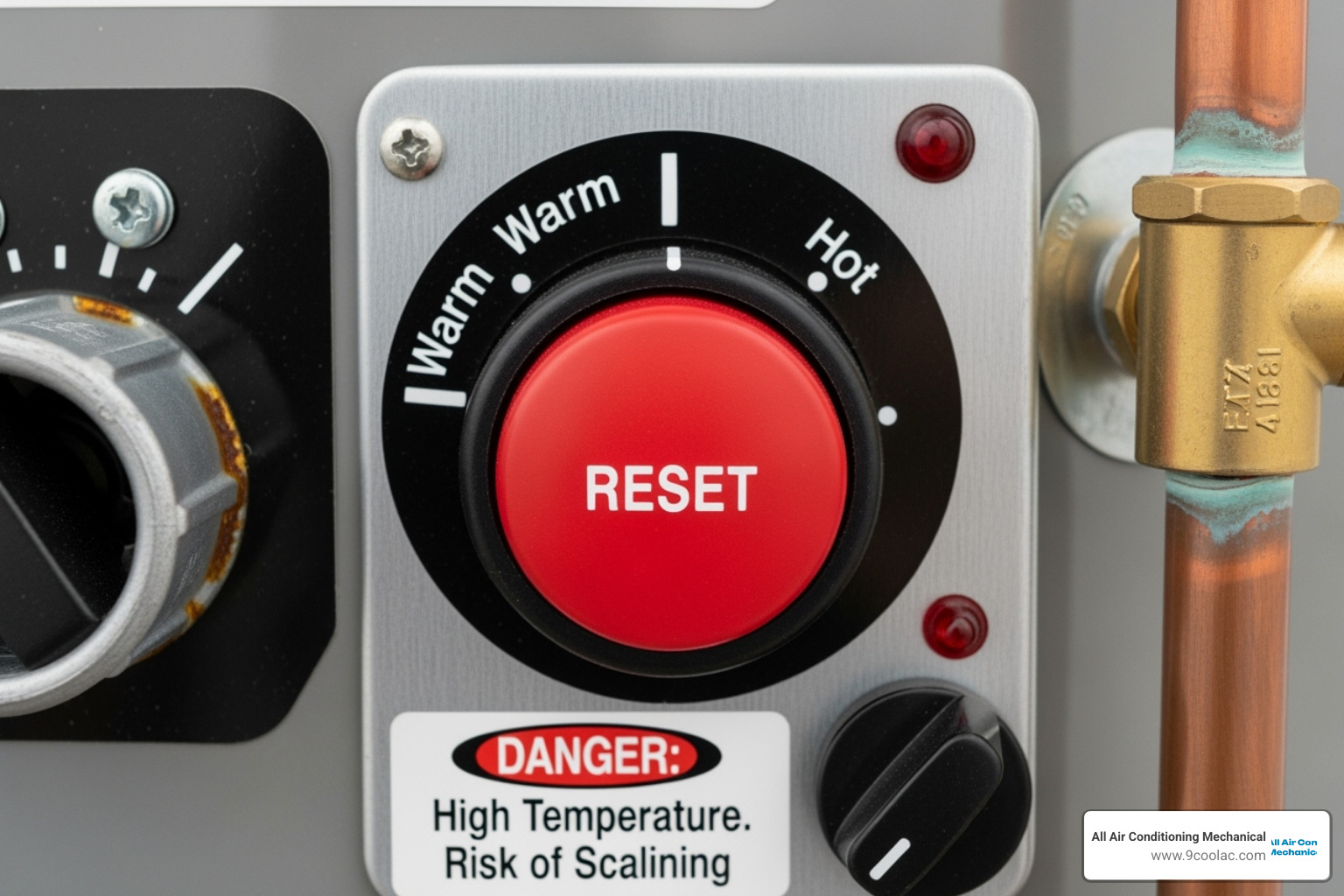
The overheat thermostat reset button is a safety switch built into your boiler, furnace, or water heater that shuts down the system when temperatures get dangerously high. If your heating system has stopped working and you've found a small red or yellow button, here's what you need to know:
Quick Reset Guide:
Important: If the button trips again immediately, stop and call a professional. Repeated tripping means there's an underlying problem that needs expert attention.
Your overheat thermostat is not the same as the thermostat on your wall. The wall thermostat controls your comfort settings—when you want heat or cooling and at what temperature. The overheat thermostat is a high-limit safety switch that lives inside your heating appliance. It's designed to prevent fire hazards and equipment damage by shutting everything down when internal temperatures exceed safe limits.
Think of it like a circuit breaker, but for heat instead of electricity. When your furnace or boiler gets too hot—whether from a blocked air filter, a failing blower motor, or low water pressure—this little switch trips and cuts power to prevent a dangerous situation. That burning smell or humming sound you noticed? Those are the warning signs that led to the shutdown.
Understanding how this safety feature works helps you respond correctly when it trips and, more importantly, helps you recognize when a simple reset isn't enough to fix the real problem.
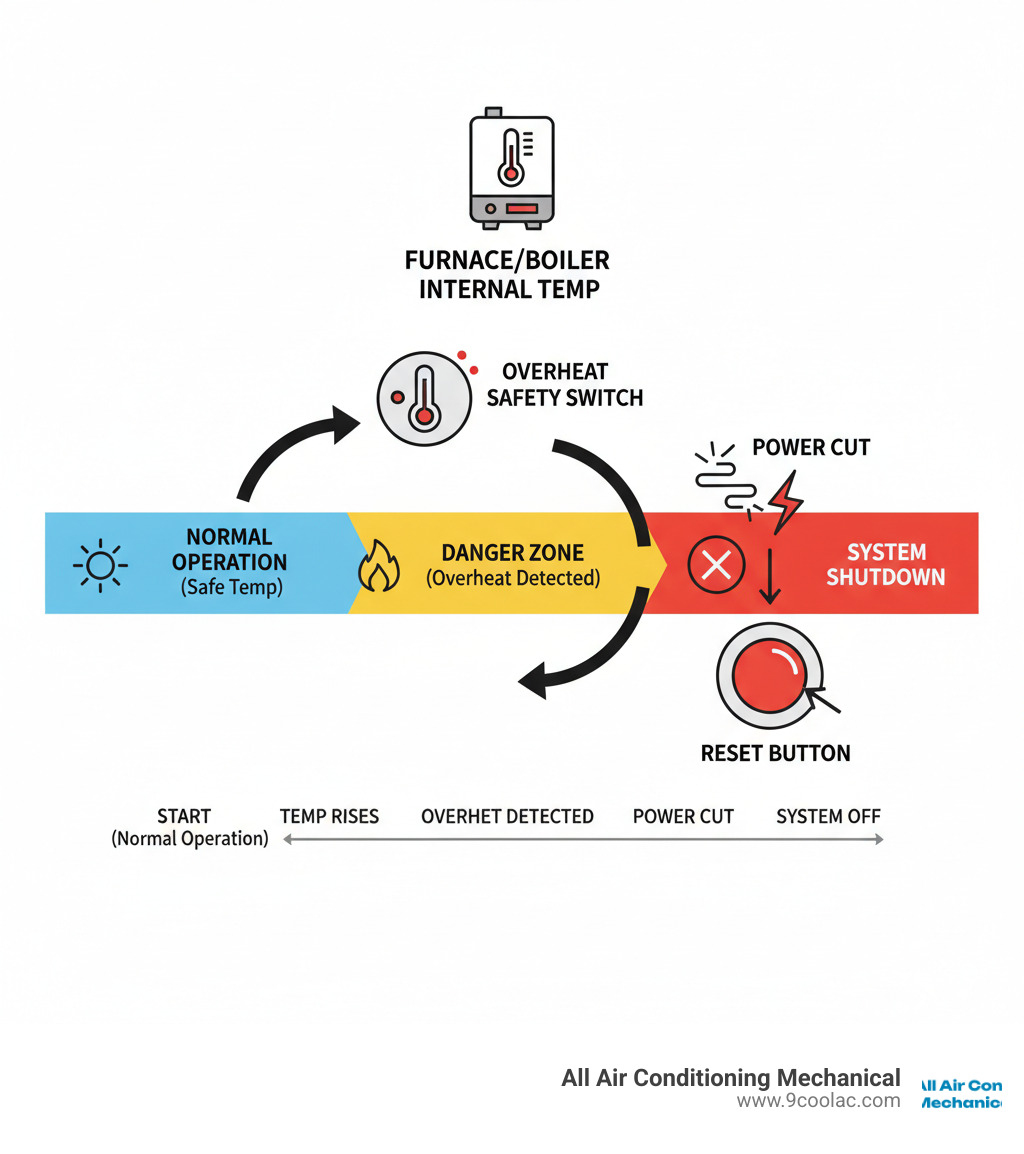
Your heating system doesn't just shut down to be difficult—it's trying to tell you something important. When the overheat thermostat reset button trips, it's the final alarm bell after your system has been sending out warning signals. Think of it like your body running a fever; the high temperature is telling you there's an infection that needs attention.
Learning to recognize these early warning signs helps you catch problems before they escalate into costly repairs or dangerous situations. Let's walk through what your system might be trying to tell you.
Your furnace, water heater, or boiler often gives you clues before the safety switch trips. Pay attention to these signals, and you might prevent a shutdown altogether.
A burning smell is one of the most alarming signs. Now, if you're firing up your furnace for the first time in months, a little dusty smell is normal—that's just accumulated dust burning off. But if you're getting a persistent burning odor during regular operation, that's your system waving a red flag. This usually means restricted airflow from a severely clogged filter, or worse, electrical components getting dangerously hot.
Strange humming sounds from your furnace often point to a struggling blower motor. If that blower can't effectively move air through your system, heat gets trapped inside with nowhere to go. It's like trying to cool down by standing in front of a fan that's barely spinning—the heat just builds and builds until the safety switch says "enough."
When your unit shuts down unexpectedly, that's the overheat thermostat reset button doing its job. Your furnace suddenly stops blowing warm air, your water heater goes cold, or your boiler falls silent—these are all signs of a safety shutdown in action.
For water heaters specifically, no hot water combined with a unit that feels unusually hot to the touch means the Emergency Cut-Off (ECO) has likely tripped. Similarly, no heat from your furnace or boiler indicates a protective shutdown. You might notice a flashing red light on your boiler—that's the lockout signal telling you the burner has shut down for safety reasons.
If you're experiencing multiple issues with your HVAC system, our guide on Quick Solutions for Common AC Problems might help you troubleshoot.
Here's the thing: the overheat thermostat reset button isn't the problem—it's the messenger. It's like your car's check engine light; it tells you something's wrong but doesn't explain exactly what. Understanding the real culprits behind overheating helps you fix the actual issue, not just the symptom.
Dirty air filters are the number one offender for furnace overheating. When your filter gets clogged with dust, pet hair, and debris, it chokes off the airflow your system desperately needs. Heat builds up in the heat exchanger with nowhere to go, and eventually the safety switch trips. Along the same lines, blocked or closed vents create the same airflow restrictions that trap heat inside your system.
Your blower motor is the heart of your heating system's circulation. When it starts failing or struggles to spin properly, it can't move air through the system effectively. Without that air movement, heat accumulates rapidly, triggering the safety shutdown.
For boilers, low water pressure creates serious problems. Water is what carries heat through your boiler system, so when pressure drops, the system can't transfer heat efficiently. Temperatures climb, and the safety switch does its job. Airlocks—pockets of trapped air in your boiler's pipes—create a similar issue by preventing proper water circulation and creating dangerous hot spots.
Water heaters face their own unique challenges. A failing heating element might keep heating water continuously, even when it shouldn't, pushing temperatures into the danger zone. Similarly, a bad thermostat component inside your water heater might misread temperatures or fail to signal the heating elements to shut off. In rare cases, the ECO switch itself can malfunction, though this is less common than the other issues.
Wiring problems deserve special attention because they're not just about overheating—they're potential fire hazards. Loose or damaged wires can generate excessive heat, triggering the ECO and creating serious electrical dangers.
For gas or oil systems, fuel supply interruptions can cause your system to malfunction. An empty oil tank, an accidentally closed gas valve, or a blocked gas line can cause the system to struggle with repeated ignition attempts. A dirty flame sensor rod on your furnace might cause premature shutdowns that stress your system and contribute to overheating over time.
Regular maintenance catches most of these issues before they become problems. Our AC Maintenance Pembroke Pines Tips guide offers practical advice for keeping your system running smoothly and preventing these common causes of overheating.
When your heating system decides to take an unscheduled break and you suspect an overheat shutdown, a quick reset might get things going again. But before you rush in, let's make sure you're doing this safely. After all, we want to restore your heat, not create a new problem.
Before you even think about touching that overheat thermostat reset button, take a moment to ensure your safety and the safety of your home. These precautions aren't just suggestions—they're essential steps that protect you from electrical shock, burns, and potential gas hazards.
First and foremost, turn off the power. Head to your circuit breaker panel and flip the switch that controls your furnace, water heater, or boiler. This cuts all electrical power to the unit, eliminating the risk of shock while you work.
If you have a gas appliance, shut off the gas supply too. Look for the main gas shut-off valve leading to your appliance. When the handle runs perpendicular to the pipe, it's closed. For gas furnaces with standing pilot lights, you can typically leave the pilot's gas supply on.
Now comes the hardest part: waiting. Your system overheated for a reason, which means it's hot—potentially dangerously hot. Give your appliance at least 30 minutes to cool down, though an hour is even better. Trying to reset a scorching component isn't just ineffective; it can burn you.
While you're waiting, grab your user manual. Every heating system is a little different, and your manual will show you exactly where to find the reset button and any model-specific quirks you need to know about. Can't find the manual? Most manufacturers have digital copies available online.
Finally, gather some basic supplies. A flashlight will help you see into dark compartments (because reset buttons love to hide in the shadows), and a pair of work gloves can protect your hands from sharp edges or residual heat.
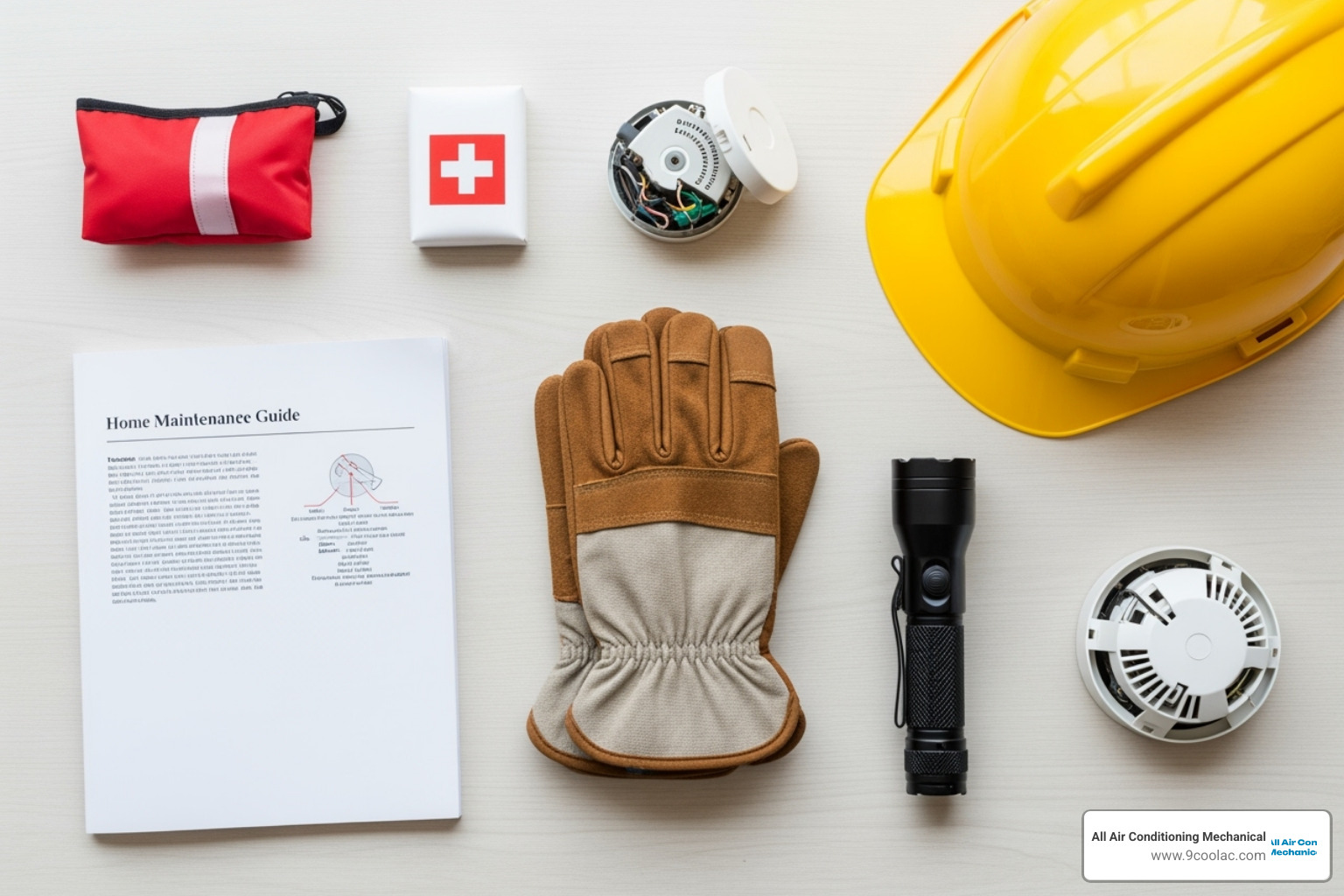
If your furnace has shut down due to overheating, here's how to attempt a safe reset. This process works for both gas and electric furnaces, though there are a few differences we'll point out along the way.
Start by going to your wall thermostat and turning it down to its lowest setting. This prevents the furnace from trying to fire up the moment you restore power. Then head to your circuit breaker and flip the furnace breaker to "OFF."
For gas furnaces, you'll need to shut off the manual gas valve on the line leading to your furnace. If you have a standing pilot light, you can usually leave its gas supply on—just the main burner supply needs to be off.
Now comes the treasure hunt: locating the overheat thermostat reset button. On most furnaces, you'll find a small red or yellow button hiding inside the blower compartment or near the burner assembly. You might need to remove an access panel or two to spot it, so this is where your flashlight comes in handy. When in doubt, check your manual for the exact location.
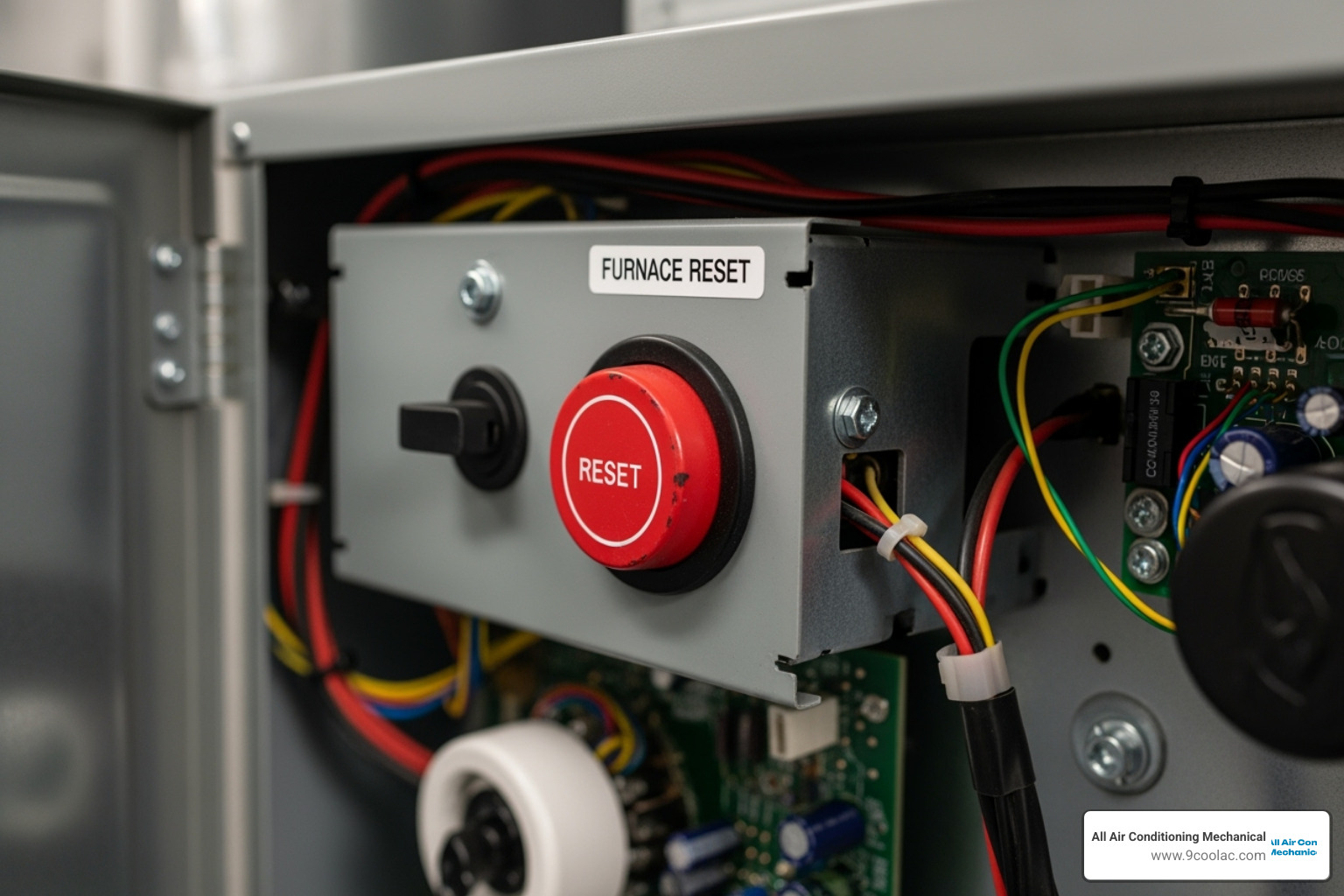
Once you've found it, press and hold the button firmly for about 30 seconds. You might hear a faint click—that's the sound of the switch resetting. If you have a gas furnace with a standing pilot that went out, follow your manual's instructions to relight it before proceeding.
Now you can reverse your shutdown steps. Turn the gas valve back to "ON" if applicable, then flip the circuit breaker back on. Return to your wall thermostat and set it to your desired temperature. Listen for your furnace to kick on and watch for warm air to start flowing.
If your furnace starts up and runs normally, great! You've successfully reset it. But if it doesn't start, or if it runs briefly and then trips the reset button again, stop right there. That's your furnace telling you there's a deeper problem that needs professional attention. Don't keep pressing that button hoping for a different result—reach out to our team for expert HVAC Repair Pembroke Pines service instead.
Water heaters and boilers have their own versions of the overheat thermostat reset button, and they work a bit differently than furnace resets.
For electric water heaters, the safety device is called the Emergency Cut-Off, or ECO. This little red button trips when your water gets dangerously hot—and yes, it's almost always red, which makes it easier to spot.
Start by cutting power at your circuit breaker, then turn off the cold water inlet valve to your water heater. You'll need to remove an access panel on the side of your tank (usually near the upper thermostat) to find the ECO button. Once you've located it, press firmly until you hear a click.
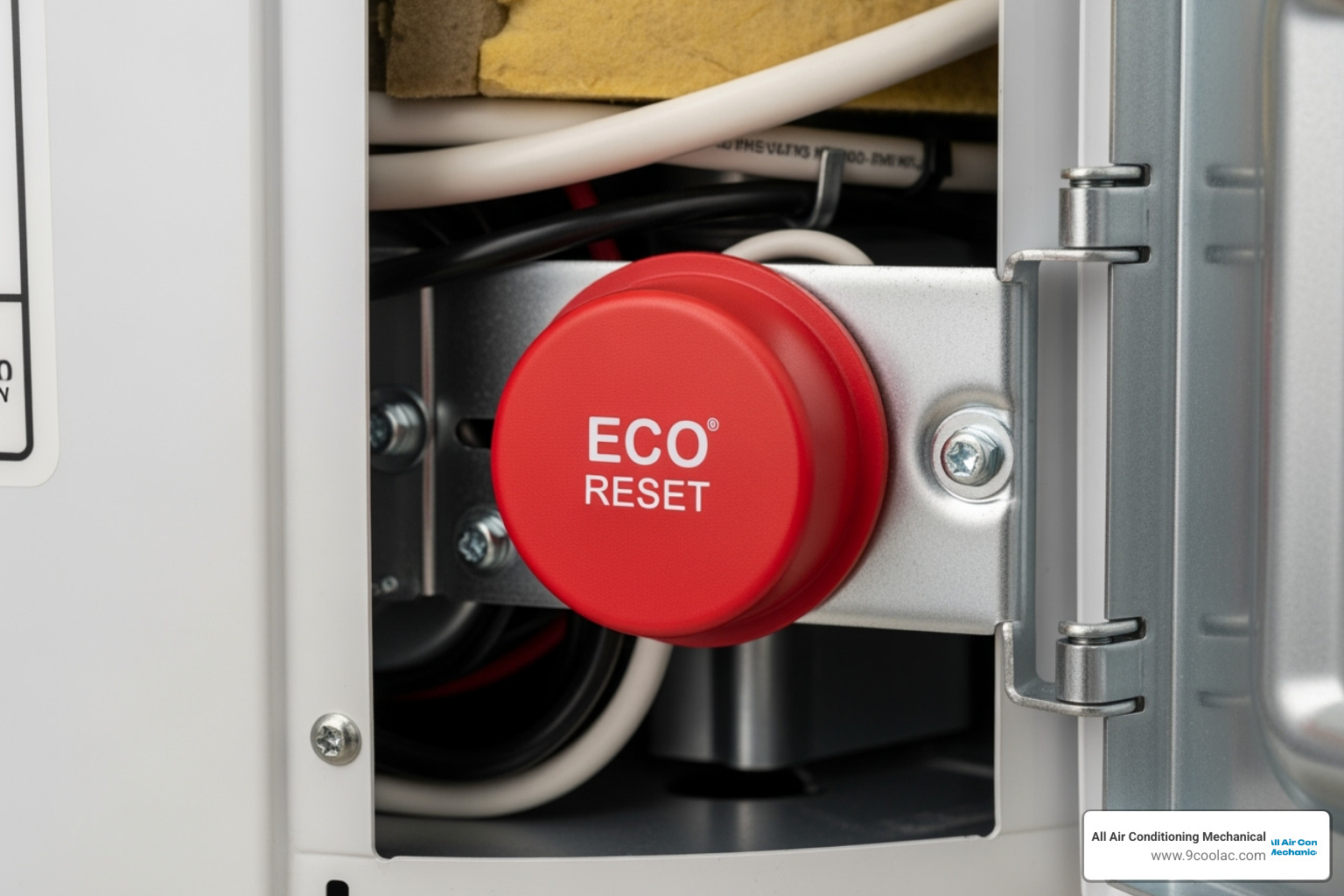
Replace the access panel, turn your water supply back on, and restore power at the breaker. Your water heater should begin heating water again. If you're more of a visual learner, this helpful video walks through the process: Water heater not heating reset button. - YouTube.
For boilers, especially oil-fired models, the reset button is often located right on the burner unit itself. You might see it as a red button or even a flashing light. After cutting power and allowing the boiler to cool, press and hold the button for a few seconds until you hear a click. Then restore power and monitor whether the boiler fires up normally.
Some wall heaters have their own thermal overload reset procedures. Gas boilers typically have the reset on the control panel or high-limit aquastat—your manual will show you exactly where.
Here's the golden rule for all resets: If your system trips again immediately or within a short time, don't keep pressing that button. One reset attempt is troubleshooting. Two attempts might be necessary. Three or more attempts means you're ignoring a serious problem that needs professional diagnosis. A repeatedly tripping overheat thermostat reset button is your system's way of protecting itself—and you—from something that's genuinely wrong.
So you pressed that little button, power came back on, and you're basking in warmth again. Problem solved, right? Well, maybe. Sometimes a reset is genuinely all you need—perhaps there was a brief power surge or a one-time hiccup. But if that overheat thermostat reset button keeps popping back up like an unwelcome game of whack-a-mole, your heating system is desperately trying to get your attention.
When your overheat thermostat reset button trips repeatedly, it's not being dramatic or overly sensitive. It's doing exactly what it was designed to do: protecting you from a dangerous situation that hasn't been fixed. Think of it this way—if your smoke alarm keeps going off, you wouldn't just take out the battery and call it a day. The same logic applies here.
The persistent tripping means your system is still reaching unsafe temperatures, and something is fundamentally wrong. A chronically dirty air filter might seem like a small thing, but it can strangle your furnace's airflow so badly that heat has nowhere to go but up. Blocked return vents or even hidden issues in your ductwork create the same suffocating effect.
Sometimes the problem runs deeper. A failing blower motor that's limping along can't move enough air to cool things down. In water heaters, a heating element that won't turn off keeps pumping heat into the tank until the ECO screams for mercy. Faulty thermostats inside the appliance itself (not your wall thermostat) lose their ability to accurately read temperatures, letting things get dangerously hot before anyone realizes what's happening.
For boilers, low water pressure or stubborn airlocks create hot spots that trigger the safety switch over and over. Electrical gremlins—loose connections, corroded wiring—can generate their own heat, especially in water heaters, making the ECO trip repeatedly. And with gas systems, pilot light troubles or ignition failures force your furnace or boiler into a frustrating cycle of attempted starts that stress the system and push temperatures into the danger zone. Even something as seemingly minor as a dirty flame sensor can cause short cycling that eventually leads to overheating.
If you've reset the button once and it trips again, stop. Don't keep pressing it hoping for a different result. That's not persistence—that's ignoring a warning sign. Your system needs professional eyes on it. For situations where your heating system just stops working unexpectedly, our guide on Troubleshoot When AC Suddenly Stops Working can offer some additional insights.
We get it. Life is busy, and dealing with heating problems feels like one more thing on an already overwhelming to-do list. But here's where we need to be absolutely clear: ignoring a repeatedly tripping overheat thermostat reset button isn't just inconvenient—it's genuinely dangerous.
Every time your system overheats, it's like running a marathon in 100-degree heat wearing a winter coat. The stress is immense. Heat exchangers warp, heating elements burn out, wiring insulation breaks down. Each overheat cycle shaves time off your system's lifespan and inches you closer to an expensive breakdown or complete system replacement.
But the bigger concern? Fire. When a furnace gets too hot, it can ignite anything flammable nearby—dust, insulation, even wood framing. Water heaters with damaged wiring or failing elements can spark electrical fires. That little reset button is literally the last line of defense between your home and a potential disaster.
There's also the risk of electrical shock when overheating damages insulation and exposes live wires. For water heaters specifically, a system that can't regulate temperature properly creates dangerously hot water—we're talking temperatures that can cause serious scalding burns in seconds, especially to children or elderly family members.
And if you have a gas or oil-fired furnace or boiler, repeated overheating can crack the heat exchanger. A cracked heat exchanger leaks carbon monoxide into your living space. Carbon monoxide is odorless, colorless, and deadly. This isn't something to mess around with.
The bottom line? That reset button keeps tripping because something needs to be fixed, not reset. Your heating system is working overtime to keep you safe, but it can't do that forever. Professional diagnosis and repair aren't just about comfort—they're about safety. Regular maintenance, like the preventive care outlined in our Professional AC Maintenance Tips, helps catch these problems before they become emergencies.
You've got questions, and we've got answers. Let's tackle some of the most common concerns we hear about that little overheat thermostat reset button.
As a rule, you should only press the overheat thermostat reset button once or twice. If the system trips again after that, stop. Repeated tripping indicates a serious underlying problem, not a simple glitch. Each time the button trips, your appliance is reaching dangerous temperatures. Forcing it to reset without fixing the root cause puts your home and family at risk. If the button is hard to reset or trips again immediately, it's time to call a professional HVAC technician to diagnose and repair the issue.
No, they are very different, and this is a common point of confusion. Your wall thermostat is the control panel on your wall for managing everyday comfort. You use it to set temperatures, switch between heating and cooling, and create schedules. Resetting a wall thermostat typically addresses programming glitches or display issues. The process varies by model and might involve using a menu, removing batteries, or power cycling the unit.
The overheat thermostat, however, is a safety switch hidden inside your furnace, water heater, or boiler. It is not user-accessible for regular adjustments. Its sole purpose is to detect dangerously high internal temperatures and shut the system down to prevent fires and equipment damage. It is a safety feature, not a comfort control.
Resetting your wall thermostat will not fix an overheating appliance, and pressing the overheat reset button will not fix a wall thermostat issue. They serve entirely different functions. If you're having trouble with your wall thermostat specifically, our guide on Troubleshooting AC Thermostat Problems can help you sort that out.
Yes, a dirty filter is one of the most common causes of furnace overheating. Your furnace requires constant airflow to distribute heat. A clogged filter obstructs this airflow, trapping heat inside the unit. This causes the heat exchanger to get dangerously hot until the overheat thermostat reset button trips, shutting the system down to prevent damage or a fire.
The solution is simple: change your air filter every one to three months. This inexpensive maintenance task is crucial for preventing serious problems, as we detail in our AC Maintenance Doral Guide. A clean filter can save you from a costly repair bill.
So, we've covered a lot of ground together. You now understand what that little overheat thermostat reset button is all about—it's not just a random switch, but a critical safety feature designed to protect your furnace, water heater, or boiler from dangerous temperatures. We've walked through how to safely reset it, identified the telltale signs that your system is overheating, and explored the common culprits behind these shutdowns.
Here's the thing: pressing that reset button can sometimes get your heat back on, especially if it was just a one-time hiccup. But it's important to think of a reset as a temporary Band-Aid, not a cure. If you're dealing with a system that keeps tripping the overheat thermostat reset button, you're not dealing with a minor inconvenience—you're looking at a symptom of a deeper issue that needs real attention.
Persistent problems mean there's something genuinely wrong. Maybe it's a clogged filter that's been neglected too long, a blower motor that's on its last legs, or wiring that's become a fire hazard. Whatever the root cause, ignoring it won't make it go away. In fact, it'll only get worse, potentially leading to expensive equipment damage, complete system failure, or—worst of all—a serious safety hazard like a house fire or carbon monoxide leak.
We get it. Calling in a professional can feel like a hassle, especially when you're hoping for a quick DIY fix. But when your heating system is literally telling you it can't operate safely, that's your cue to bring in expert help. At All Air Conditioning Mechanical, our experienced team knows how to diagnose what's really going on with your system and fix it right the first time. We're not just about getting your heat back on; we're about making sure your home stays safe and comfortable for the long haul.
Your family's safety and your peace of mind are too important to risk. If that reset button keeps tripping, don't wait for a small problem to become a big emergency. Reach out to us, and let's get your system back to running smoothly and safely.